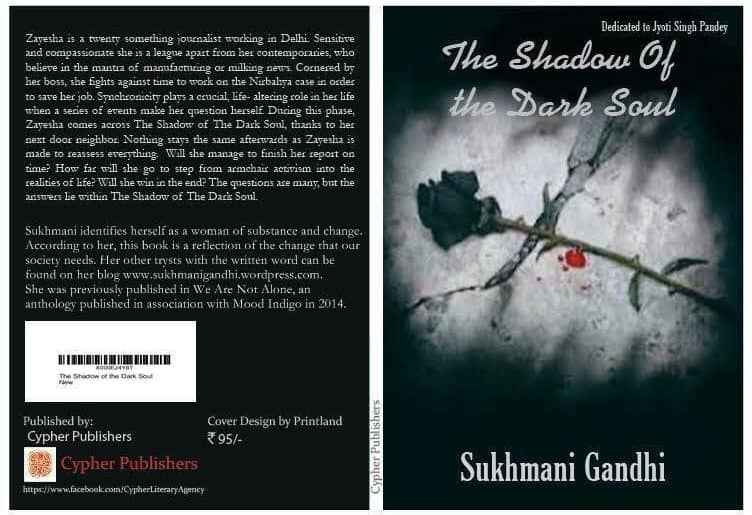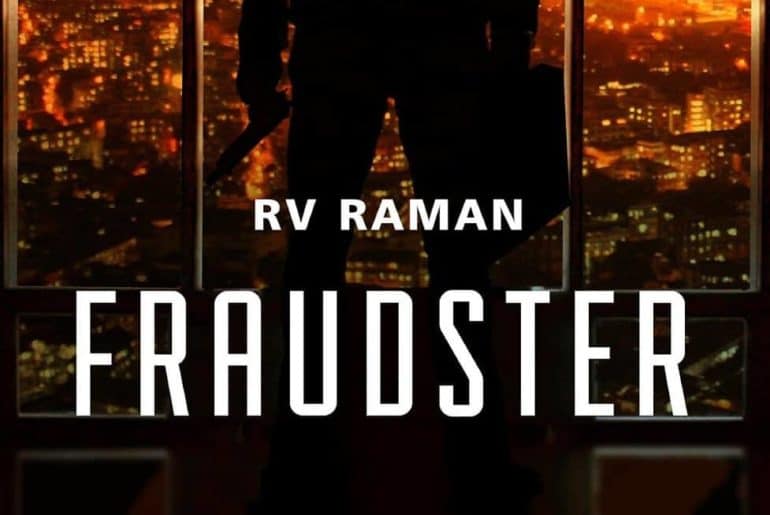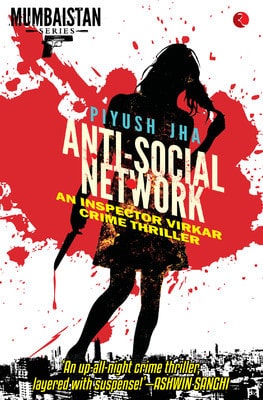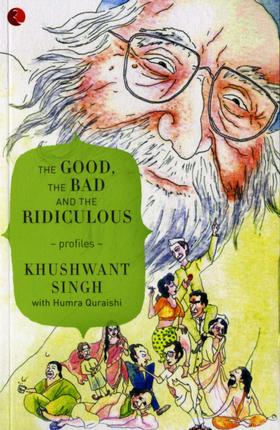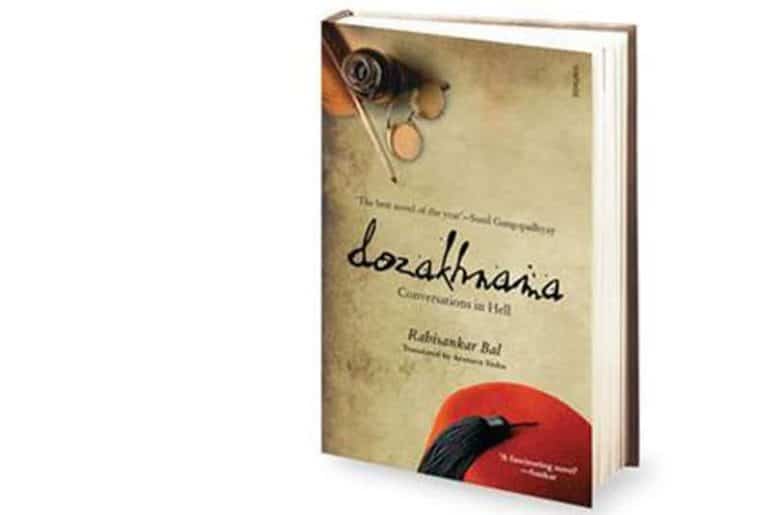th December 2012. A fatal sexual assault on a woman managed to move people around the world to take action. Horrifying, barbaric and brutal is how we described the incident while also dishing out graphic details of the gory incident in harsh depth. The incident has definitely been one of the most soul-stirring and shocking event of our times. It also managed to bring so many fallacies and flaws of our society to the stage of deliberation and discussion. We cribbed about the inadequacy of timely help and support; there was much hue and cry about the insouciant attitude towards crimes, there were debates about punitive action against the criminals including the juvenile, it mourned the loss of humanity. But most importantly, it agonized over the sorry state of women in the country. Because the victim was an archetype of a modern woman, being career-oriented, independent and fun-loving, the incident resonates with us. At this critical juncture, Sukhmani Gandhi, a student of Lady Shri Ram College, has written a thought-provoking debut novel called The Shadow of the Dark Soul as a tribute to Nirbhaya. The book begins with her take on the incident, and on a plethora of other issues that are related to the incident. The book raises some really important questions: How glorious is a country where women are still something to be protected by men and brothers? What about values in a man? Would a cultured man who has virtues deeply etched in his mind be a party to this charade that our country doles out? How can our politicians and leaders compare the holy union of matrimony to rape? There is a ceaseless torrent of questions which bring the lack of logic in all argument given in public sphere to suppress women. From there, the book follows the story of a journalist whose conscience is targeted, and here she is the symbol of the indifferent populace. The book completes itself by providing a solution: change comes from actions, not just words. Words and ideas can change the world, but not unless these are translated into proactive, fruitful action. The book is a reminder of the fake equality we try to boast of, and the fact that there’s a long way to go still. Kritika Narula [email protected]]]>
I have never read an author with such devotion as Anuja Chauhan. Undoubtedly my favourite, I have found myself totally mesmerised by her books. A creator of four stories set in different times and backgrounds, her latest is a sequel to Those Pricey Thakur Girls. A prodigy in the advertisement industry, the lay-man can also remember her for her works like Pepsi’s ‘Oye Bubbly!’ campaign.
Those Pricey Thakur Girls ended with a short paragraph to excite readers about what is coming next. It had been two years since I had read Pricey, and in the period I was waiting, I reread the three books again and Googled the release of this book. Much to my delight, she failed to disappoint me!
The book begins with Samar, the hot-shot new director in Bollywood and quickly leads to the inhabitants of 16, Hailey Road, Delhi- Bonita and her tailors. If you have read the previous book, you would know who BJ and Mamta was, and the ABCDE daughters. Bonu was orphaned at a young age and adopted by her maternal grandparents. She is all grown up now and runs her business.
But BJ’s death turns the story as he leaves asking Samar to divide his house into five hissas for his daughters A,B,C,D, and E. The story cleverly and interestingly revolves around property disputes, family disputes, fake wills, illegal acquisitions, courts, property dealers, and item songs (or, a party song). In between all this drama, bloom two love stories- of the two step-cousins Samar and Bonu, and of childhood friends Steesh and Eshwari. Chases, denials, psycho sisters, pervert friends this book is a complete package.
Not revealing too much of the story, I would recommend it for a good read. Anuja’s USP for me is that she has till now based stories on a variety of backdrops- politics, cricket, media, real estate. Yet, I have enjoyed reading the technicalities with such interest that I might have never read Harry Potter with. However, the fact that her story is based mostly in Delhi makes it more enjoyable, because one can relate it to places one has seen.
Carefully chosen words, not too fancy that I am forced to use a dictionary, anyone can read it. It is one of those books that you just cannot put down. The story has its twists, just when you thought that the kiss means everything is going to be all peaches and cream, the love birds split. She calls out to your imagination, and you realize her stories are so natural and so real! This is one book that provides closure to the story, you are not left with an imagine-yourself ending. Her writing style is what I admire the most- Hindi + English, and my favourite is the funny, but now commonly used obscene words, with utmost causality. Because only in an Anuja Chauhan book will you find, “Tu chutiya hai!” written in a common dialogue.
So, whether you are happy with life or not, read it! I have, and I know what effect her stories can have on the mind. However, be cautious, there is no clue to another book, so you may be left wanting for more. Until then, do it my way, re-read it!
Featured Image Credits: goodreads.com
Ayesha Sareen
The Bard of Blood is written by Bilal Siddqui, a 20 year old student (yes, let that sink in) of Mass Media at St. Xavier’s College, Mumbai. This book is not just his first novel, but also a great attempt at a thriller that will keep you interested all throughout.
The story begins in Balochistan, in the year 2014, with four Indian spies being captured by Mullah Omar- leader of one of the deadliest terrorist clans of Pakistan. On the verge of their beheading, Omar is stopped by another force to reckon with – the ISI, who seem to have a better and more cruel plan to get even with the Indians. With this begins a fast tale of bravery, adrenaline rush and sacrifices which are definitely the three main components of a brilliant story.
The book revolves around Kabir Anand, an ex-RAW agent who had to forcefully leave the organisation after a disastrous mission in Balochistan in 2006, and who was forcefully brought back to carry out another mission in Balochistan. This is his time to avenge not just his defamation, but also the death of his mentor and father figure – Sadiq Sheikh. Despite a number of characters and several location changes (New Delhi to Balochistan to Mumbai to Ahmedabad) the book moves with a fast speed and smooth understanding.
The book, researched with the assistance of US and Indian intelligence agents and war correspondents, and written under the guidance of crime writer S. Hussain Zaidi, takes us deep in the roots of terrorism and what it implies for different sections of this world; how some take it up as a religious agenda, some are driven by the force of revenge and others for the lust of money. As the story evolves, we witness a mix of thrill with a tinge of romance and of course – death, all in a Shakespearean style that is hard to miss.
The events take you on a ride of planning, attacks and counter-attacks as Kabir Anand fights life, death and friendships in a journey faster than time itself, all for the eventual desire to save his country. The book is well researched and written in a way that combines fact and fiction together to create a story worth reading.
Picture Credits: Penguin India
]]>
For those of you who have seen the Television series, The Originals, reading the book is a sacred duty. You can never have enough of the Mikaelson siblings, and the book by the producer Julie Plec, who began this series as a spin-off from The Vampire Diaries, is a way of knowing your favourite characters better.
For those of you who don’t have any idea about it, a little summary of The Originals – The Rise: The Mikaelson family is ruined and broken beyond repair. In New Orleans in 1722, the city is marred with anarchy and a mild war is raging between the enemies: the witches and the werewolves who are not ready to live together. The twist in the tale is brought by our favourite Klaus. His impending marriage to Vivianne is counted upon to be end the hostility. But it’s apparent that Klaus is volatile and short-tempered.
There had been much furor and excitement about this book. It makes sense because a book AFTER the TV show is a welcome change, since usually it is the other way round. To top it off, we have an inexplicable alacrity to know as much as we can about the Originals family and siblings specifically.
Initially, the narrative was difficult to read and grasp, and it is a little difficult to relate to the series. But the book and the series are set in different time periods. The only thing that perhaps remains unchanged is their evil father. The book is too detailed for its own good. Although the story and its characters, with all their eccentricities do everything, even disappoint you; one cannot really pin-point as to what was extraneous. Eventually everything falls into place, and one only craves for more of it.
It ends well, and some really strong quotes, coupled with the vividness of the characters, make it worth reading. Because one’s loyalty to The Originals is Always and forever!
Image credits: harlequin.com
The book “Marissa Mayer and the Fight to Save Yahoo!” by Nicholas Carlson was published earlier this year. Carlson, a Business Insider writer has been covering stories on Google, Yahoo and Marissa Mayer since 2006. Divided into four parts, the book flits between Yahoo’s past, Marissa’s past and then about her tenure as the CEO of Yahoo.
Ordinarily, I wouldn’t have picked up a book about Yahoo. To me, it’s a brand that was once an important part of my internet activity (I was hooked to its games like Diner Dash and spent many hours in the now questionable threads on Yahoo Answers) back in middle school, but had slowly become irrelevant once its competitors started gaining traction. When Google opened Gmail to users worldwide, I logged out of my Yahoo mail account and never returned to the site.
So what made me pick up this book? Well, for starters, Mayer has a very interesting career story, what with the Stanford graduate being one of the first 25 employees at Google who went on to become one of the most crucial members on its team. It was only after she became the CEO of Yahoo in 2012, that I began to hear about Yahoo again, particularly about its acquisition of Tumblr, a blogging platform and its investment in Alibaba, a Chinese e commerce site which had the world’s largest IPO or Initial Public Offering ever, when it went public last year. However, her occasional cold behaviour and obsession with detail have led to enemies in her career too. I bought the book mostly to get to know more about her decisions and corporate moves.
For me, the book stands out not just because the chain of events in Yahoo and Mayer’s life is so interesting, but also because the way the book has been written. It is neither an autobiography, biography nor a commentary. It has been based on hundreds of interviews from various sources who have worked and known Mayer in the past. Internal documents of Yahoo have been used too, apparently. The amount of research the book reflects is remarkable!
The events are such that they might be a little difficult to process during the first read. Though it’s very gripping, you might feel overwhelmed by the information–I made notes to keep track of certain points. But for anyone who’s interested in corporate affairs, investments, the ups and downs of what was once considered a top company and the career of a powerful lady, this book is a great addition to your bookshelf!
As a commerce student, it is only fair for me to be inclined towards reading a book that tells a story of corporate India. There’s no gainsaying that reading a debut author is a risk, but the blurb of the book, with a description of the criminal activities, vicious manipulations and corruption, manages to intrigue a prospective reader. And so, it happened with me.
I am sure about the fact that it will keep you glued till the end. To say that it has mind-blowing twists and turns in the plots, seems an understatement. One murder after another, one attack after another, and the writer has craftily kept us guessing till the end who the culprit is.
The author’s experience in the corporate world comes in handy. When I started reading it, I had initially thought that the book will at best, be predictable. As luck would have it, it was everything but. The plot twists outdo themselves every time.
The characters are meticulously etched. One of the senior characters remarks, somewhere before the murders take place in the novel, “Where there is money, there is deceit. With lots of money, there is lots of deceit. Be careful of whom you trust”. Consider this a summary of the plot. From one character to another, as a reader, we have multiple reasons to look at them with suspicion, sympathy, pity, fear. But one thing is crystal-clear: you can love them or hate them, but you cannot ignore them. None of them.
The setting in time is contemporary, which makes it all the more resourceful for us. There are loopholes in IT security, there are unscrupulous practices in auditing, there are investigations which lead to little evidence, or so we think.
I was a little flummoxed in the way the culprit was finally revealed, it somehow lacked the dramatic flair that was otherwise remarkable throughout the novel. Without spoilers, all I can tell is that the culprit is a person you least expect, and someone not even instrumental to the plot. The end is, in no way, disappointing, but it just does not match the grandeur of the rest of the novel.
Here’s a shout out to the fans of Jeffery Archer, Robert Ludlum, John Grisham: you may add Fraudster to your to-read list – it is worth it.
Kritika Narula
[email protected]
The story, as the name and the cover clearly suggest, is a crime-thriller. Based in Mumbai, it takes the reader through the murky world of tech-savvy miscreants who use social networking sites and the Internet for blackmail and ‘sextortion’. Inspector Virkar is the apparent protagonist, and just like all protagonists, he is supposed to solve the riddles in the plot. In this case, it means finding the connection between a string of gruesome murders, and the activities of a bunch of college students-turned-cyber criminals.
Now, it might seem an exaggeration, but it is not: I read the novel, cherished it and really likened it to the mystery thrillers penned by Satyajit Ray. Inspector Virkar is almost like Feluda in his contemporary incarnation.
This novel, at one level also tells the reader how real the threats of privacy and security are, in this age of internet-addiction, thereby giving us goosebumps. I, for example was scared to use my laptop, webcam and so on for days after reading the novel.
The plot has all possible ingredients of a bestseller- a group of college students gone morally decrepit, a psychologist with multiple roles to play, a police system marred by complacency and a hacker, who retains “ethics” in his activities, and deploys his talent to help Virkar.
A hitherto solid, foolproof expert network shatters on the altar of one woman’s revenge and another man’s incessant pursuit of a way beyond the deadlock. With its arcane description of the repugnant crimes, an insight into the threats posed by the virtual world, and an underlying manifestation of a troubled, frail teenage psychology, this book is totally worth the time and money spent on it. The crisp, accurate narrative which has, to the delight of the reader, no verbosity, is a major puller. A lot of colloquial phrases have been used, and this may be liked by some readers, detested by others. And yes, a character to watch out for, Naina our enigmatic psychologist, sarcasm personified!
In the beginning, until the plot settles into a chase, it might appear as if it is an episode straight out of CID. I implore the reader to keep reading and not assume that it is monotonous, because it is worth it!
Kritika Narula
When my Dad gifted me book vouchers of a popular bookstore for my birthday last month, I was itching to buy some interesting non-fiction books. While browsing through the store, I noticed a white book titled ‘How Google Works’ under the section of newly released books and ended up buying it without a second thought. The book turned out to be exactly what I’d hoped it would be-insightful and engaging with many stories from Google’s journey and bits of humour and sarcasm in between.
Contrary to what one might initially assume, the book is not about the technology that Google uses to power its many products (search engine, Gmail, YouTube, Drive and so on), but how the organisation functions. Written by Google’s ex CEO and now Executive Chairman, Schmidt and former Senior Vice President Rosenberg, this book is divided into sections about hiring, creating a work culture, decision making and innovation.
As a Business Studies student, I thoroughly enjoyed reading about the unique principles and factors that have shaped the way the company runs; factors that make it so successful and a company that thousands hope to join one day.
The one principle that stands out the most and is stressed on repeatedly is how important a company’s employees and work culture truly is. Google is known to have one of the best work cultures in the world (the book even mentions how one of the early engineers wanted to bring his pet ferret to the office and was told to go right ahead) and a very rigorous hiring process to ensure they hire what is referred to in the book, as a ‘Smart Creative’, each time. Google aspirants would find this chapter particularly useful as it roughly outlines the four categories used for evaluation of candidates; Leadership, Role related knowledge, General cognitive ability and ‘Googleyness’.
Another theme common to all sections in the book is the importance of data while making any decision, whether it’s about hiring, solving a problem, creating a strategy or starting a new product.
The chapter on Innovation was my favourite part of the book. It only makes sense for a company like Google to talk about such a factor, what with its ambitious projects of building self-driving cars and Project Loon, which hopes to provide wireless broadband service to the world through huge hot air balloon like devices.
All in all, whether you’re hoping to join Google one day or are just simply curious about the foresight and culture required to build a quality product and team, How Google Works should be next on your reading list for sure.
Image credits: hachettebookgroup.com
The latest book by Khushwant Singh that recently hit the bookstores is a compilation of 35 famous and controversial personalities through the eyes of the 98 year old celebrated columnist. The Good, The Bad and The Ridiculous pens uncensored attacks on people with whom Khushwant Singh had relations, met and interacted over the years. Co-authored by Humra Quraishi, this book provides an insider’s look at the lives of people like Indira Gandhi, Giani Zail Singh, Jinnah, Gandhi and many others and introduces us to their not-so-pleasant characteristics.
He dedicates small chapters to each personality and narrates his accounts wittingly and candidly. The book engages you with innately honest opinions and makes one curious to know what bomb would explode in our perceptions of the famous ones after reading about them.
Reading out blurbs like, “There was something cold and haughty about her. Not my type at all … But she had her set of admirers … and never forgave anyone who said anything against her” for Indira Gandhi or “He took a vow of celibacy in his prime, but without consulting his wife, which I think was grossly unfair. He would sleep naked beside young girls to test his brahmacharya. He could be very odd” for the Father of the Nation makes the book both intimate and irreverent.
He quite clearly expresses his bitterness for L.K Advani and expresses his ‘ambivalence’ for Indira Gandhi. Khushwant Singh dedicates the biggest chapter to V.K Menon followed by a close second of Giani Zail Singh.
The book entertains and shocks the reader with Singh’s sketches of the good, bad and the ridiculous shades of the people whom he knew for almost a century. Well informed accounts and frank opinions by KS have been appreciated by all and makes him one of the most honest and candid writers in this industry. Khushwant Singh also makes it very clear in this book he that neither dreads criticism and nor is bothered about it.
This book will certainly ring a bell for people who crave gossips coming out from the elite class of the country. Notwithstanding the fact that the book is only a person’s opinion which need not be a full story, the book can prove to be useful for peeking into the lives of others through the eyes of the Big Old Man of the writing world.
Name of the author: Rabisankar Bal
Translator: Arunava Sinha
Genre: Magic realism
Year of release: 2013
Price: Rs 399
Who is the better storyteller: God or Manto?
Manto’s grave In Miani Sahib, Lahore, used to hold this epitaph before it was replaced by his sister fearing consequences from the newly independent Islamic nation of Pakistan. This race with God to be the better storyteller continued till his end and really is the essence of Dozakhnama. Within the conversation between two of the most celebrated writers in Urdu – Saadat Hasan Manto and Mirza Ghalib – the novel oscillates between two of the most important turning points in subcontinental history; the first war of independence in 1857 and the partition in 1947. In disguise of a literary masterpiece, it chronicles history in far more eloquent terms than any history book.
A journalist, unnamed throughout the book, researching on the tawaifs of Lucknow comes across an unpublished manuscript of a novel written by Manto about his conversation with Ghalib beyond the grave. He takes the manuscript back with him to Calcutta to translate it into Bengali with the help of his Urdu teacher, Tabassum. And then what follows is a world unleashed by the turning of pages where lost dastangos are found again, where Ismat Chugtai and Ashoke Kumar are living characters, where the last Mughal emperor, Bahadur Shah Zaffar is still holding onto glories long past. The decay of the Mughal Empire and with it the culture attached to it of Shahjahanabad is echoed in Manto’s description of the aftermath of partition. If history repeats itself, then there are no better historians than poets.
Translators are important. Without them, Marquez would still be undiscovered, Murakami would still be an unknown name and Neruda would not have become the most quoted poet ever. Likewise, without Sinha’s translation, Dozakhnama would have remained a book only celebrated inside the Bengali reading audience. While a lot of the nuances of the original language get lost in translation generally, Sinha has still managed to keep the pacing of the words and the emitting imageries true. Interestingly, the journalist-protagonist in the novel is himself translating a work from one language to another. One paradox inside another, by the end, the novel magically opens up portals to our shared history which reminds one that the past is not always that different from the present.

